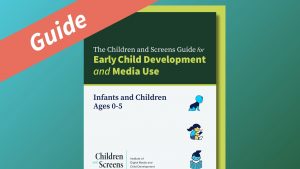
The COVID-19 pandemic led to an increase in screen time, both for virtual learning and recreational use. Eye doctors (ophthalmologists and optometrists) have reported an increase in complaints from parents related to their children’s technology use: vision changes, dry eyes, blurry vision, eye fatigue, headaches, and more. To help you combat these effects, some of the leading ophthalmologists, optometrists, and screen time experts have shared their suggestions below on the best ways to protect children’s eyes in our increasingly digital world.
Go Outside
Myopia, also known as nearsightedness, has become one of the fastest growing eye issues among children, both in the US and globally. “The incidence of myopia has increased more than 60% in the past three decades,” says Dr. Kevin Chan, OD, MS, FAAO, “and the condition is worsening rapidly.” Studies have found that the onset of myopia is closely associated with genetic and environmental factors, such as an increased amount of screen time and limited outdoor time. “Bright, ambient, natural light differs from the light that screens emit”, says Karla Zadnik, OD, PhD, Glenn A. Fry Professor of Optometry and Physiological Optics and Dean at The Ohio State University College of Optometry. “Natural light causes a dopamine release, which inhibits the abnormal eye growth that causes nearsightedness. In this sense, it may be our propensity for indoor living, rather than screen time per se, that’s the driving factor for myopia,” she says.
“Being outdoors has been shown to be protective against myopia and the lack of time children spend outdoors is one of the strongest factors that seems to be driving the increase in myopia prevalence. On top of this, increased screen time is not only associated with myopia in itself, but also detracts from quality time spent outdoors” adds Dr. Saoirse McCrann, PhD, Doctor of Optometry, former researcher at the Centre for Eye Research at TU Dublin and current Novartis associate.
Chan explains that “Conventional glasses generally offer a short-term remedy for vision correction only, yet they do little to prevent progression of myopia in the long run. Clinical treatments are also readily available, including custom contact lenses and topical eye drops to help mitigate the deterioration of children’s vision.” Chan agrees with the growing chorus of experts that plenty of outdoor time and regular breaks are the best way to protect against eye strain and dry eye symptoms, which can hasten the onset of myopia.
Keep Your Distance (From The Screen)
The pandemic presented particular challenges for students engaged in remote learning, as it requires them to focus on their devices for hours at a time. One way to help fight against the deleterious effects of this prolonged screen exposure is to make sure that kids are an appropriate distance away from the screen. “Our eyes are designed to mostly see at a far distance, with occasional near viewing tasks,” says Dr. Jeff Anshel, OD, FAAO. “Computer screens are a challenging viewing situation due to glare, possibly poor letter resolution, and awkward positioning of the screen, so it’s not surprising that eye doctors are seeing kids with more vision-related problems lately.” Like many of our experts, Anshel suggests keeping screens an arm’s length away whenever possible. Proper posture (feet flat on the floor, back straight, and wrists off the keyboard) can help kids maintain an appropriate distance, as well.
20/20/20 Rule
If you’re wondering how best to balance screen time with non-screen time, Dr. Moran Roni-Levin, Assistant Professor of Ophthalmology and Pediatrics at the University of Maryland School of Medicine suggests the 20/20/20 rule, which was developed by Dr. Anshel. “For every 20 minutes of screen time,” she explains, “children should take a 20 second break and look 20 feet into the distance.”
Dr. Christopher E. Starr, MD, Associate Professor of Ophthalmology and Director of Refractive Surgery and Ophthalmic Education at Weill Cornell Medicine, likes to add another 20 to the rule. “When we’re staring at computers and concentrating intently, our blink rate decreases by up to 50%, which leads to excessive tear evaporation and eye dryness, redness, grittiness, and visual fluctuations,” he explains. “So during those breaks every 20 minutes, I recommend blinking or squeezing the eyes shut about 20 times. And if the boss or teacher isn’t looking, just keep the eyes closed for 20 seconds or more!”
Dr. Ken Nischal, MD, FRCOphth, Director of Pediatric Program Development at the University of Pittsburgh Medical Center Eye Center, explains, “The longer children look at digital screens the less they blink. This results in increased evaporation of the tear film, a condition called evaporative dry eye. This leads to eye rubbing, excessive blinking and a feeling of having blurry vision.” Dr. Nischal recommends several remedies to evaporative dry eye symptoms, including, “making the immediate environment moist around the child by using a bowl of warm water or if possible a humidifier is helpful. If a child is going to be on a class for an hour or more, using some artificial tears prior to the class starting is well worth considering. I recommend using drops and not a gel otherwise the child may get blurry vision for several minutes.”
Why should we blink? “Consciously blinking distributes tears evenly across the ocular surface and reduces the likelihood of dryness,” report the Representatives of the Binocular Vision, Perception, and Pediatric Optometry Section of the American Academy of Optometry. “If rest breaks and blinking do not provide relief, people should seek care from an eye care professional to rule out other potential causes of eye discomfort.”
Find Balance
Smart devices are a privilege, not a right, and you should remember to set firm boundaries for their children, says Dr. Tien Y. Wong, MD, PhD, Professor and Medical Director at the Singapore National Eye Center, Duke-NUS Medical School, Singapore. “First, I would encourage directly linking children’s screen time with their ‘outdoor activity time,’” he explains, suggesting one hour of screen time require one hour of outdoor activity. “Second, I would encourage directly linking the amount of screen time with ‘break-time,’ so that 30 minutes of screen time is always followed by 30 min of ‘break-time.’” Wong emphasizes that technology can be their friend in this process, and recommends utilizing parental control apps to limit children’s screen time.
In accordance with guidance from the World Health Organization, Dr. Glen T. Steele, OD, FCOVD, FAAO, suggests that children shouldn’t have digital devices before the age of two, and after that, he recommends limiting screen time to one hour per day until they reach school age. Steele also encourages you to monitor their children’s screen time for signs of excitability or an inability to look away from their devices when engaged in games or social media. “Taking the device completely away except for discipline is not recommended, as kids will be using these devices for work throughout their life, and gaining familiarity with them is essential,” he explains. “It’s more important to help the child discipline themselves and learn to take breaks on a regular basis.” Children and Screens and the American Academy of Pediatrics recommend that families work together to establish media use plans which allow for a healthy balance of on- and off-screen activities.
Limit The Light
While it will still be quite some time before there is conclusive studies about the long-term effects of prolonged exposure to the kind of blue light emitted by most devices, there are steps you can take right now to minimize the short-term effects, which can include disruption of the circadian rhythm, myopia (short-sightedness), and dry eyes. “Most devices have a night mode or a reduced blue light mode,” says Dr. Thomas Aller, OD, FBCLA, “and a recent study showed an improvement in sleep patterns with these adjustments. Blue light filters on eyeglasses were found to be a bit less effective, but it’s possible that the combination may be even more helpful.” Consider the ambient lighting around the device, too. You may need to help your child adjust their screen to an appropriate brightness level, or help them position it in a way that cuts down on glare. Regardless of the environment, cutting off screen light an hour before bed will help ensure a better night’s sleep for children and adults alike.
When it comes to limiting blue light to avoid eye strain, Dr. Ken Nischal, MD FRCOphth notes that most research on the prolonged impacts from blue-light exposure was undertaken with higher intensity blue light wavelength than what is emitted from digital screens. Though some research has shown a reduction in digital eye strain with blue light blocking filters, he concludes that “at present, there is little evidence that Digital Eye strain can be avoided by the use of blue-blocking filters.”
Keep Watch
If you are worried about your children’s vision, there are telltale signs that they need a check-up, according to Dr. Jillian Youngerman, OD, Assistant Professor at the Southern California College of Optometry at Marshall B. Ketchum University. “Symptoms of excessive screen time can include headaches, blurred vision, dry eyes, and double vision,” says Youngerman. “If a child is showing any of these symptoms, a comprehensive eye examination is the first step to ensure that there is no eye condition causing these issues.” Beyond the traditional guidelines about taking breaks and keeping proper distance from screens, Youngerman also reminds parents of children with glasses to make sure that the glasses fit well, are up to date, and are being worn as prescribed.
Eye conditions are often passed down from generation to generation, so parents who have eye issues themselves should keep a particularly close watch on their children’s development. “The greater the number of close family members with any ophthalmic (or medical) condition, the greater the risk for your children,” says Dr. Ken Sorkin, OD, FAAO, Long Island Pediatric Ophthalmology & Strabismus, a Division of ProHEALTH Care, Plainview and Miller Place, NY. “Look at your family history, and monitor appropriately.”
Even if vision problems don’t run in your family, it’s a good idea to take children for periodic checkups. “Have your child’s eyes examined regularly by an eye doctor,” suggests Professor Mark Rosenfield, MCOptom, PhD, FAAO, SUNY College of Optometry. “They may need help to keep the screen in focus, or to ensure that their eyes are able to point, or converge, accurately on the screen for a prolonged period of time.”
—
While we still have much to learn about the lasting toll of increased screen time, that doesn’t mean you have to wait to take action to protect your children’s vision, dry eyes and eye fatigue. Fortunately, experts agree that there are some simple steps that you can take to ensure that remote learning doesn’t inadvertently lead to vision problems down the road. Keeping an appropriate distance from devices, taking regular breaks, and maintaining good posture will all lay the groundwork for sustained ocular health, and learning about the early warning signs of eye trouble can help you head off issues before it’s too late. Meanwhile, Children and Screens stresses that more research is urgently needed to understand the impacts of screens on young people’s vision and long-term ocular health.
About Children and Screens
Since its inception in 2013, Children and Screens: Institute of Digital Media and Child Development, has become one of the nation’s leading non-profit organizations dedicated to advancing and supporting interdisciplinary scientific research, enhancing human capital in the field, informing and educating the public, and advocating for sound public policy for child health and wellness. For more information, see www.childrenandscreens.com or write to info@childrenandscreens.com.



